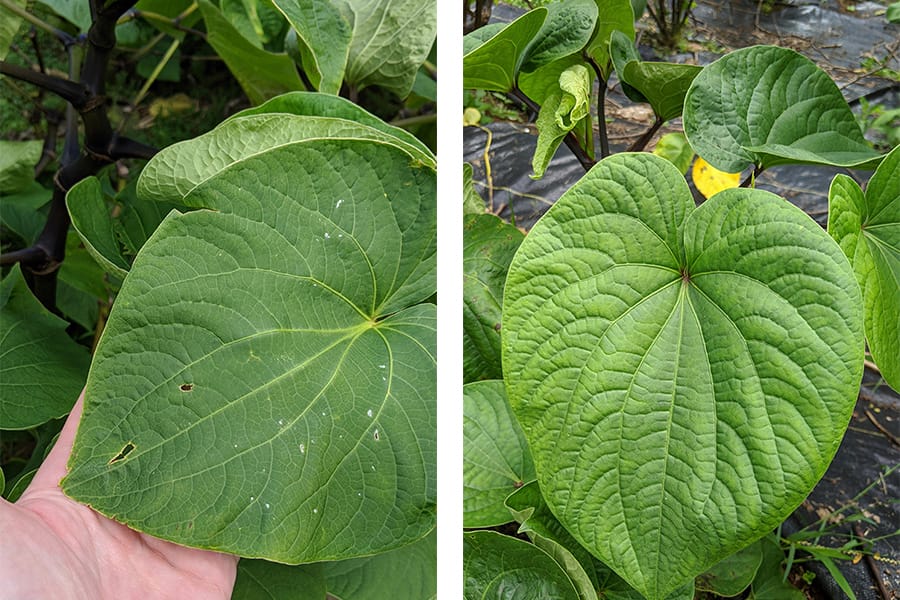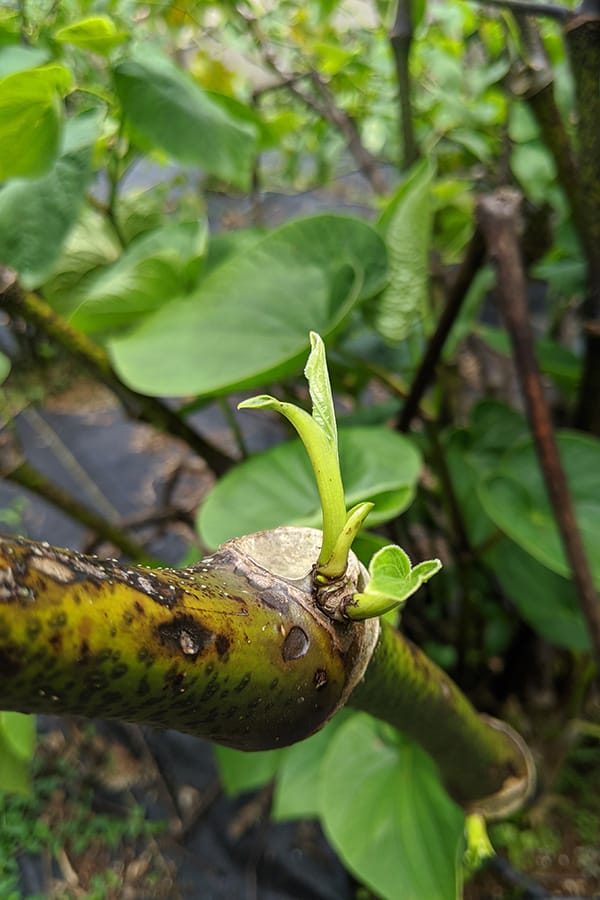Yaqona, ‘awa, ava, sakau, malogu are just a few of the names that island nations call what we know as, “Kava.” Kava however, is the Tongan word for the scientific name of the plant, “Piper Methysticum.” Piper is the genus name of the Pepper family, with kava being one of many within the genus. Often confused with other members of the Piper family, other notable Piper plants include:
Piper Auritum: Often called the Mexican Pepperleaf or, “Hoja Santa” which means Sacred Leaf in Spanish.
Piper Wichmanii: Wild Kava, a plant that looks similar, but is not Piper Methysticum.
Piper Nigrum: Black peppercorn, used in cooking around the world.
Piper Betle: The Betel pepper, who’s leaves are often chewed by southeast Asians.
The Piper species has been used by humans for millennia, primarily growing in tropical forests around the world. Similar to kava, these other Piper plants like warm, humid climates. Many of them have a leaf pattern that is similar to one another.

While these plants look similar, they are far from the same! Hoja Santa, or Piper Auritum leaves, have been used for many years in Mexican cuisine as a way to give complexity to dishes through notes of licorice, sassafras, mint, tarragon, and eucalyptus. Kava on the other hand has been described as peppery, piney, and sometimes almost spicy. The primary difference in consumption between these two examples, is that while hoja santa’s leaves are consumable, only the kava plant’s rhizome (stump and roots) is digestible.

Kava has historically been grown on the islands of the South Pacific such as Hawai’i, Tonga, Samoa, Vanuatu, and Fiji. This shrub also has a unique propagation requirement that other Piper plants don’t. While most plants are able to reproduce on their own, kava plants don’t have that luxury. A kava plant has no seeds, and no means for self-sufficient reproduction. By cutting the stem of the kava plant between the nodes, kava farmers are able to bury small separate sections of kava to grow an entirely new plant. From a single kava plant, a farmer has the potential to make hundreds more! For thousands of years, the best kava plants have been hand-picked to offer particular beneficial qualities while also removing the negative.
The kava that Kalm with Kava provides has been, quite literally, painstakingly planned for thousands of years to get to your doorstep. It’s readily apparent to a kava connoisseur that each island nation has placed particular emphasis on certain qualities of the kava plant. While Tongans prefer the light headiness of certain cultivars of kava, the Ni-Van people of Vanuatu are known for their heavy “sit on the couch a few more minutes” types of kava. Their farmers long ago decided that their families and friends liked these qualities, and only took nodes from the kava plants they liked to continue on the species.
Luckily for us, they did the hard part! While we don’t have to deal with some of the problems that kava farmers dealt with thousands of years ago, we still had to figure out an easy way to get kava from the other side of the world to the far reaches of the United States and pretend like it was easy. We’ve scoured the islands for the best farmers to do business with, and have been able to build relationships to provide the best quality kava you can buy. While other brands of kava might not hit the mark, we can promise you that our little section of the Piper family, Piper Methysticum, will be properly represented at Kalm with Kava.